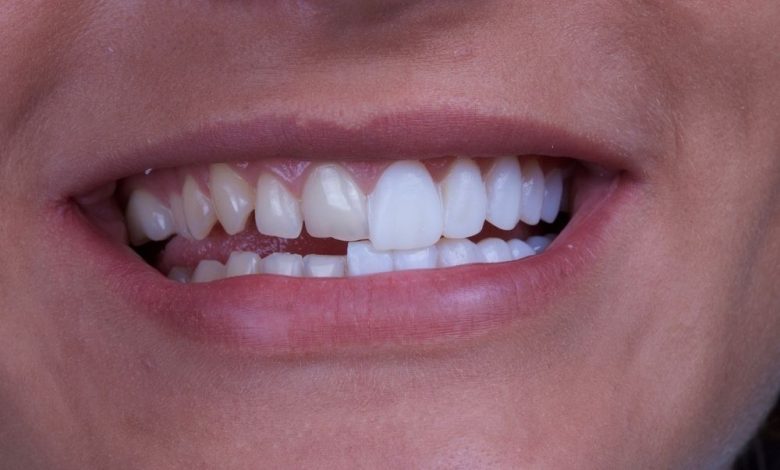Dental Bonding Is an Excellent Alternative to Veneers

Teeth bonding: an alternative to veneers
If you are suffering from a chipped, chipped, or even discolored tooth, there are treatment options for you. One of the many options available to patients in these situations is dental bonding gap. The great thing about bonding is that it’s cheaper than the alternative (veneer), but it can still give you that dreamy smile you’ve always wanted. Ultimately, it is a fairly inexpensive way to do minor dental repairs. For patients with dental insurance, bonding is usually covered by dental insurance!
What exactly is dental bonding?
Dental bonding gap is a painless procedure usually performed by a cosmetic dentist and occurs when the dentist applies a composite material that is the same color as the tooth. This composite material is then molded into the shape of the tooth before it is hardened and polished.
So the material simply adheres to the tooth. In addition to solving minor dental problems such as chipped or cracked teeth or even gaps between teeth, dental bonding gap can also be used to fill small cavities, much more visually appealing than traditional silver dental fillings.
Advantages and disadvantages of adhesives.
Each procedure has its pros and cons. The advantages of bonding are price, speed, and convenience. The price is relatively cheap, especially when compared to the alternative. The procedure can usually be done in a single visit, and anesthesia is usually not required.
However, patients should understand that suture material may stain after application. Therefore, proper care is needed after the procedure. Dental bonding gap can last for several years, but is less durable compared to veneers and/or crowns.
Adhesion Retention
Patients must follow some special instructions when they go home after a suturing procedure. First, because the dental bond is prone to staining, red wine, tea, coffee, and soft drinks should be completely eliminated or at least reduced, in addition to smoking, which can not only stain teeth but also cause heart disease. gum and oral cancer.
In addition, the dental bonding gap is more likely to crumble than other (more expensive) forms of dental procedures, so the patient should avoid chewing on hard objects and biting their nails.
In general, if you only have a minor cosmetic dental problem, such as a discolored tooth, a cracked tooth, or a gap between your teeth, then bonding might be for you so you can have that bright white smile you’ve always dreamed of.
What helps determine if the dental union is the best?
Typically, a restorative professional will consider a more cosmetic approach, such as repairing shallow cracks or filling gaps between teeth, but suturing is recommended. Bonding is also used to lengthen misshapen or small teeth and to whiten teeth discolored by things like tetracycline or coffee. Bonding is usually done on the teeth at the front of the mouth, such as the incisors, rather than the teeth at the back, called molars. Because the surface of the incisors is more vertical, the damage is usually isolated to that part of the tooth, without compromising the bone and root below.
Front teeth tend to be less subject to wear than molars, which are generally subject to chewing, so dentists may use materials that are less forgiving when rebuilding and repairing holes and chips. After the tooth(s) have been prepared by scaling and conditioning the area(s), the dentist will apply and mold the resin to match the shape of the tooth before curing it with a high-intensity hand-held light that it is harmless.
When a crown makes more sense
Due to current technological advances, crowns can sometimes be completed in a single visit. A recent development is CEREC, or Reconstruction Ceramic, a high-precision, patented procedure that is performed in conjunction with traditional porcelain crowns. Unlike ceramic crowns, which must be sent to an external laboratory, CEREC is made with a combination of internal milling and CAD-CAM imaging. Your dentist will have several factors to help determine the best approach based on your specific needs. Either way, crowns are made to fit your teeth.
Crowns are used as an alternative to fillings in more complicated cases. This is especially true in cases where portions of a tooth have been removed so that the function and appearance of the tooth can be restored after a restorative procedure such as a root canal. Because crowns completely cover the remaining part of the tooth, it is fully protected and your dentist can make sure it fits snugly against the gum line. While crowns can also be used on front teeth with equal or better effect than bonding, reverse dental bonding gap (bonding to molars) is not as common or effective because the requirements for molars are higher than for incisors. . This is mainly the reason why crowns are preferred even in the case of molars that are more aesthetic, such as covering discolored or discolored teeth.
Which approach suits you?
While we hope this overview of some of the differences in crowns and bonding has helped you, the best way to find out what is best for your needs is to visit your local dentist to discuss your dental concerns. . Only then can he present you with the options that make the most sense based on your budget and schedule, and severity and location.
